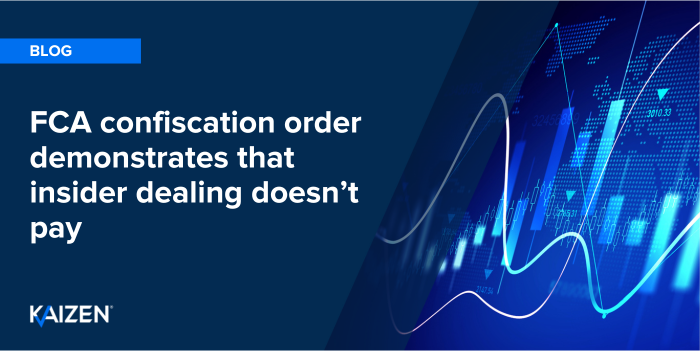FCA continues its focus on data quality and market abuse
The FCA recently published its Annual Report and Accounts for 2019/20 wherein they discuss their sector priorities.
Market abuse takes centre-stage but they highlighted their aim of improving the quality of firms’ transaction reports. As we know, these are the main tools used by the regulator to surveil the market but also for the investigative process where the reports act as the first port of call when analysing suspicious activity highlighted by Suspicious Transaction and Order Reports (STORs).
The FCA notes that they are using technology to review for both suspicious activity and for data quality. Indeed, we know that data quality is a necessary condition for an effective surveillance capability. The good news is that they noted a significant improvement in data quality.
Where is EMIR?
What was surprising to me, was that EMIR reporting was not raised as a key priority. We are currently facing unprecedented uncertainty and market volatility. Now is the time where we need an early warning system to head off any financial sector tsunami the most. And yet, EMIR reporting was not mentioned. After more than six years and two upgrades, EMIR reporting is still not fit for purpose. Indeed, ESMA recently singled out the UK for its failure to enforce compliance with EMIR amongst the regulated community. We at Kaizen know from our extensive quality assurance testing across the sector that EMIR reporting is in a worse state than MiFID.

Potentially Anomalous Trading Ratio
During 2019/20, the FCA received 5,336 STORS and a further 788 external notifications. These resulted in 415 preliminary reviews and 53 enforcement investigations being opened. FCA activity and the level of market abuse is not necessarily the same thing, so to add to the existing estimates of market cleanliness, they have added a new measure – the Potentially Anomalous Trading Ratio (PATR). This looks at suspicious activity rather than just correlating price movements ahead of takeover announcements. PATR is primarily based on the activity of the trading participant and whether this is outside of their normal activities.
The diagram below shows a price sensitive announcement (represented by the red line) and illustrates the time periods considered when constructing the PATR.

What stands out is the short benchmark period to assess “normal trading behaviour” of 30 days. With all the data at their fingertips, a more sophisticated measure of normal would be warranted, as a too short a measure will overstate the level of potentially abusive behaviour. The post-announcement period is also questionable. Any parties not taking their profits in the five-day window are excluded thereby reducing the activity that falls within scope of the period resulting in an understated measure. Added to this, the records in scope exclude where individuals make a profit of less than £5000 on their trade and £50,000 for legal entities.
As with all measures, it has its shortcomings but it is helpful when considered with the other indicators.

More to do
Based on the measures, the FCA states that 99.2% of activity did not occur during a sensitive time period before the announcement of price sensitive information. However, 6.7% of the trading around price sensitive announces was anomalous. This may not seem like a large proportion but, when you consider the statistic is looking only at the 0.8% and is calculated in a period when there has been little takeover activity compared to prior years. Indeed, if this is accepted as a basis for consideration of impact, it can be argued that it weakens the cost-benefit case for market-wide obligations to apply anti-market abuse measures. Insider traders are still taking a reasonable slice of the pie, so there is more to do to ensure fair markets.

- To discuss the contents of this report with Dario or one of our regulatory specialists please contact us.
- To read the report in full visit the FCA’s website.
- All graphics and diagrams © Financial Conduct Authority.


